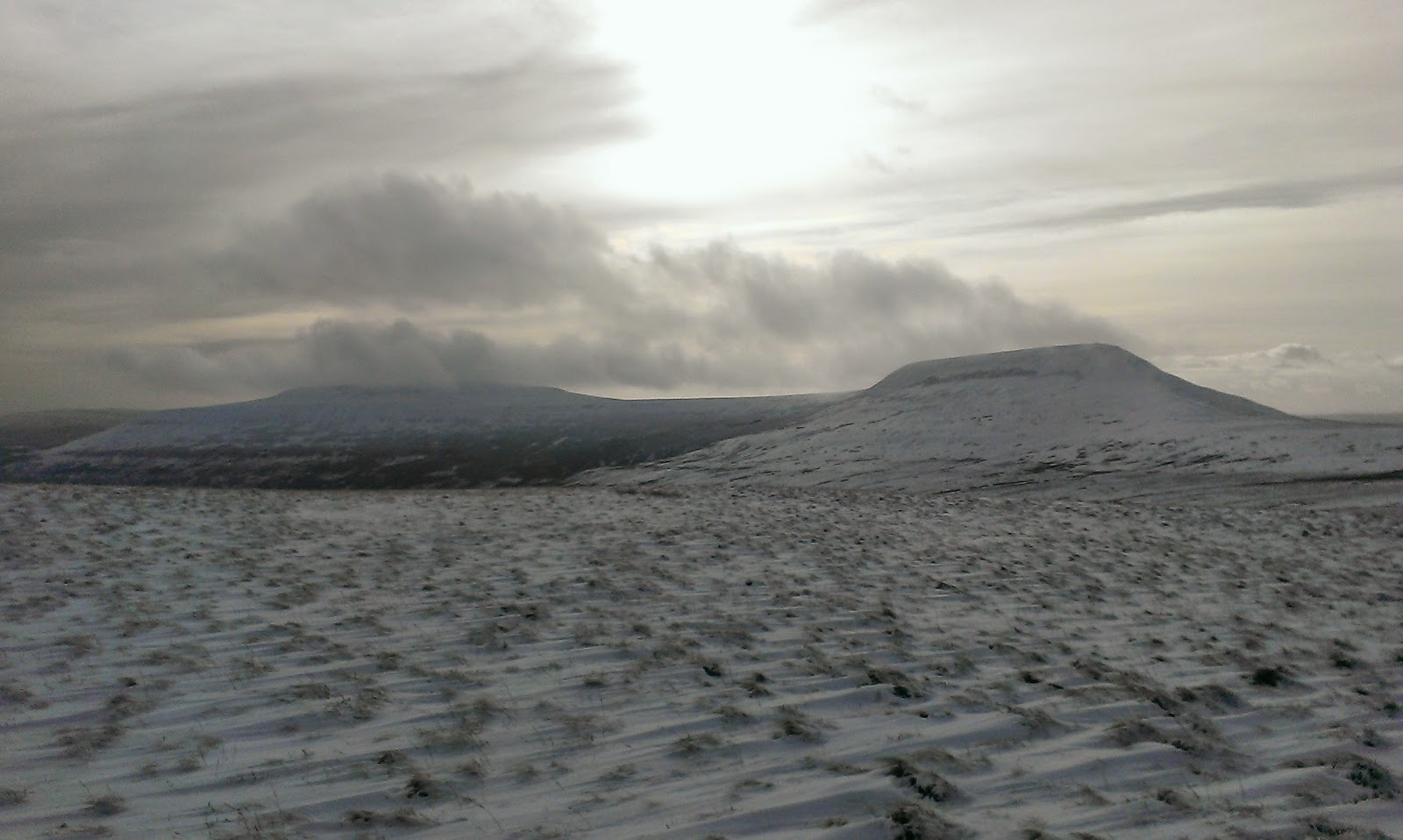"And far away a mountain zone,
A cold white waste of snow-drifts lies"
Speak of the North, Charlotte Bronte
The new year's first encounter with a snowscape, and its the exceptional array of colour that fixes in the memory: the white and grey shades of the snow and sky a counterpoint to the tawny russet and sodden green of the hillsides. The winter sun seems to bring urgency to its brief displays and, filtered through cirrus and mist, its light pulls the life up out of a landscape that could otherwise appear drab and dormant at this time of year.


One of the many joys of a landscape visited by snow is the shape-shifting quality it can bring to familiar features.
The stone of a usually welcoming summit shelter, now a threatening ice-bound realm.
A fallen tree cloaked in snow, with strangely human lines; from the mind of Andy Goldsworthy.
A trig point looming out of the cloud becomes a thing of ghostly sentinel reassurance amidst the enveloping whiteness.
Though walking in wintry conditions requires care and knowledge, in the words of R.S. Thomas snow feels no pity, it can also be a welcoming host; on heather uplands the thin dotted green or black path lines on the map become gleaming white high ways on the ground, illuminating the route ahead. This snowy benevolence enhanced by the boot tracks that give confidence of the right path taken (assuming a lost soul is not being followed). On this occasion the hard stamped marks of a fell runner anticipated my route, the same circuit completed in reverse.
And, in this far away mountain zone, how does it feel? It feels like I don't ever want to come down.






.jpg)







